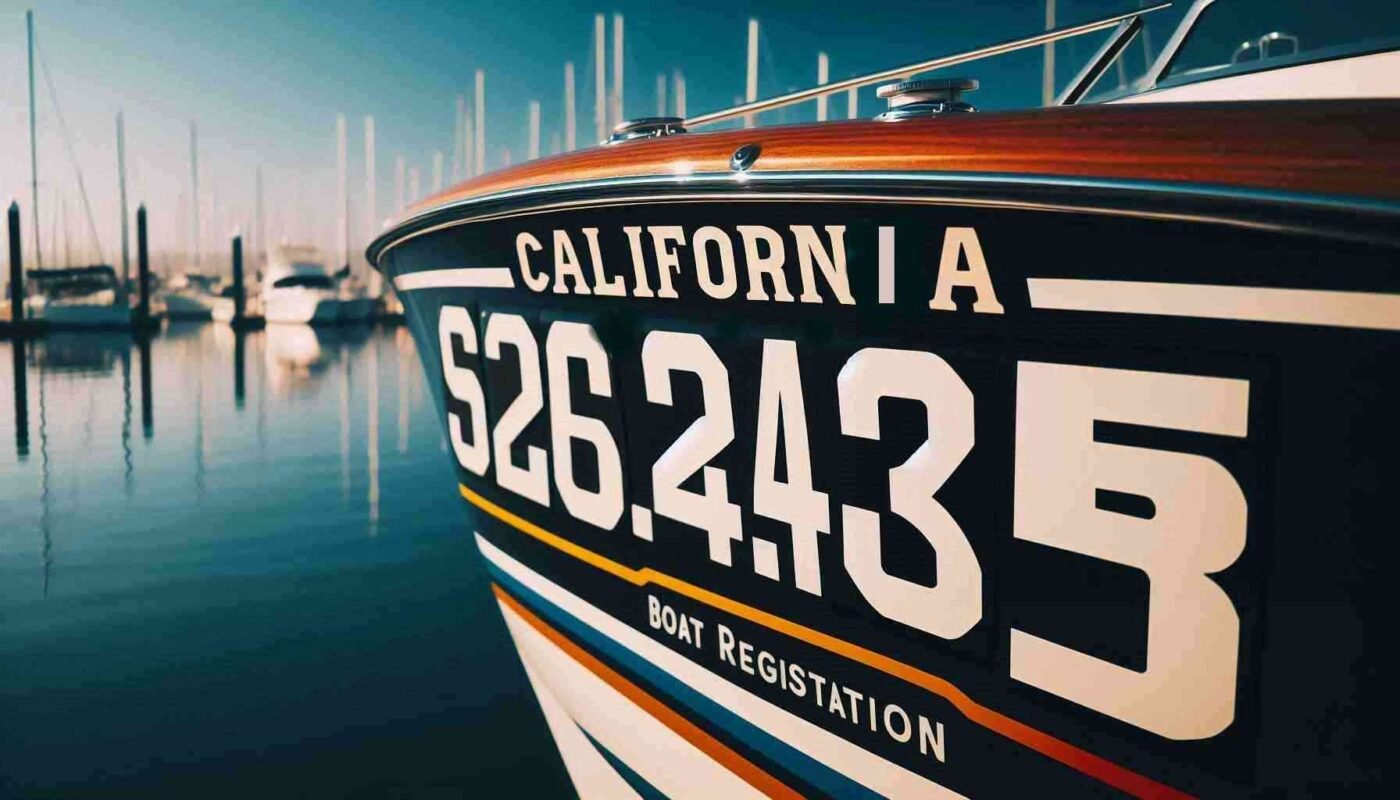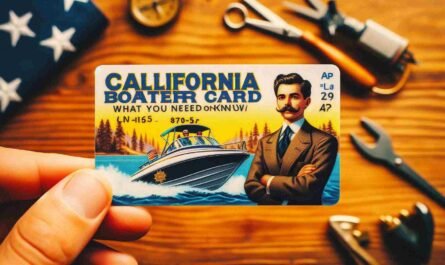How to Display California Boat Registration Numbers Correctly
If you just got a boat—or plan to use one in California—you’ll need to know how to properly display your registration number. You might be thinking, “Can’t I just slap some numbers on the side and hit the water?” Not quite.
The state of California has some strict guidelines when it comes to boat registration numbers, and failing to follow them could land you a fine. But don’t worry. In this post, we’ll break it all down in plain English so you can get your boat legally ready to cruise the coast, lakes, or rivers without any hassles.
Why Boat Registration Numbers Matter in California
Just like license plates on your car, boat registration numbers are used to identify your vessel. They help law enforcement and other agencies keep track of boats on California’s waterways. You’ll need to display these numbers—and some additional stickers—on your boat in a specific way.
So, before you launch your boat for the season, it’s important to make sure you’re following California’s rules for displaying registration numbers.
Where Do I Find My Boat Registration Number?
When you register your boat with the California Department of Motor Vehicles (DMV), you’ll receive a registration number. The number will look something like this:
CF 1234 AB
Here’s the breakdown:
- CF stands for California.
- 1234 is your unique vessel number.
- AB is a set of random letters that complete your number.
You’ll also receive:
- Validation stickers that show the expiration year.
- A Certificate of Number—keep this on board at all times!
How to Properly Display Your Registration Number
Now let’s get into the details. California has a few rules that are easy to follow if you know what they are ahead of time.
1. The Correct Location
Place the registration number on both sides of the bow (that’s the front part of the boat). More specifically:
- The number should be on the forward half of the boat.
- Both sides must display the number.
Tip: Think of this like putting house numbers on your mailbox—you want people to be able to see them from either side.
2. Font and Lettering Requirements
The state doesn’t have a favorite font, but it does have rules about how the numbers should look:
- Use plain, block-style letters. No fancy fonts, italics, or cursive styles.
- The characters must be at least 3 inches tall.
- The numbers and letters have to be readable from left to right.
Think of something like bold Arial or Helvetica. Just make sure it’s easy to read from a distance.
3. Spacing and Placement
One of the most common mistakes? Messing up the spacing.
Here’s how you should display your number:
CF 1234 AB
Note the spacing:
- A space or hyphen must appear between the “CF” and the numbers, and between the numbers and the final two letters. So, “CF1234AB” is not acceptable.
Approved formats include:
- CF 1234 AB
- CF-1234-AB
Just pick one and stick with it consistently on both sides of your boat.
4. Validation Stickers
You’ll get two small square stickers with your registration—they’re important. These stickers show your boat’s registration is up to date.
Here’s how to display them:
- Place one sticker on each side of the vessel.
- Position it within six inches of the registration number.
- It should be placed after the registration number, toward the back of the boat.
Do not put the stickers in front of the number or in random places—this is one of the easiest ways to get ticketed.
Common Mistakes to Avoid
We get it—displaying boat numbers might not be the most thrilling part of boat ownership. But these small details can save you time, money, and legal headaches. Here are a few mistakes to watch out for:
- Too-small numbers: If your numbers are under 3 inches tall, they won’t meet the legal requirement.
- Fancy fonts: Stick to plain block letters. Avoid script, calligraphy, or bubble letters.
- Wrong sticker placement: Remember, stickers go to the right of the registration number.
- Incorrect spacing: A missing space or hyphen might seem small, but it’s still a violation.
Need a Visual Example?
Sometimes, the best way to learn is by seeing an example. A correctly displayed registration should look like this:
CF 1234 AB ☐
(☐ = sticker, located 2–3 inches to the right of “AB”)
If you do it just like that, you’re golden.
Can I Use Decals or Paint for the Numbers?
Yes, you can use either—just make sure they meet all the requirements. Whether you use vinyl decals or paint, the numbers must:
- Be the right size (3 inches tall)
- Use a color that clearly contrasts with your boat hull
- Be waterproof and durable—no peeling or fading allowed
Just think of what your boat looks like from a dock or another boat. If the numbers are hard to see, it’s time for an update.
What Types of Boats Need Registration Numbers?
Not every floating device needs numbers. In California, you need to register your boat if:
- It has a motor (even a small trolling motor counts)
- It’s powered by sail and over 8 feet long
You don’t need to register:
- Small, non-motorized boats like kayaks, canoes, or inflatable rafts
- Boats used exclusively on private lakes or ponds
Still not sure? When in doubt, check with the California DMV website to make sure your specific vessel requires registration.
Final Thoughts: Keep It Legal and Easy
Owning a boat in California is an amazing way to enjoy the outdoors—whether you’re fishing, cruising, or just soaking up the sun. But part of being a responsible boat owner means following the rules, especially when it comes to boat registration numbers.
To recap:
- Display your numbers in the correct spot—both sides of the bow.
- Use block letters at least 3 inches tall.
- Ensure proper spacing and sticker placement.
- Check for visibility and durability.
It’s a small task that pays off big time—no fines, no trouble, just fun on the water.
So, is your boat number display up to par? If not, now’s the perfect time to fix that before hitting the waves!
Happy boating, California! 🚤🌊
Looking for a hassle-free way to display your boat numbers?
Check out pre-spaced vinyl decals online—they make it super easy to apply everything neatly and even comply with the state’s rules.







